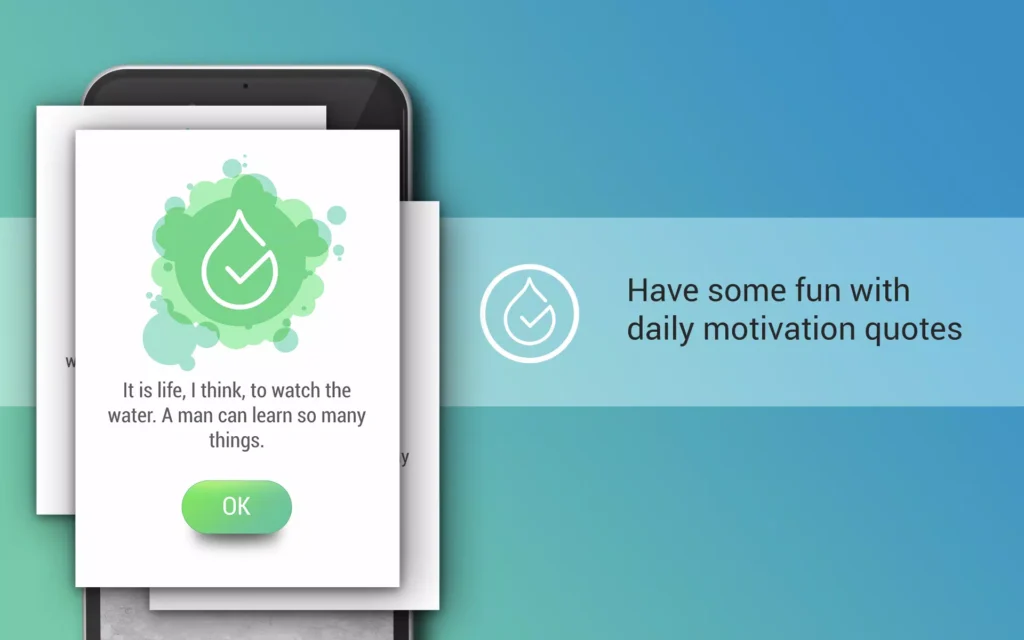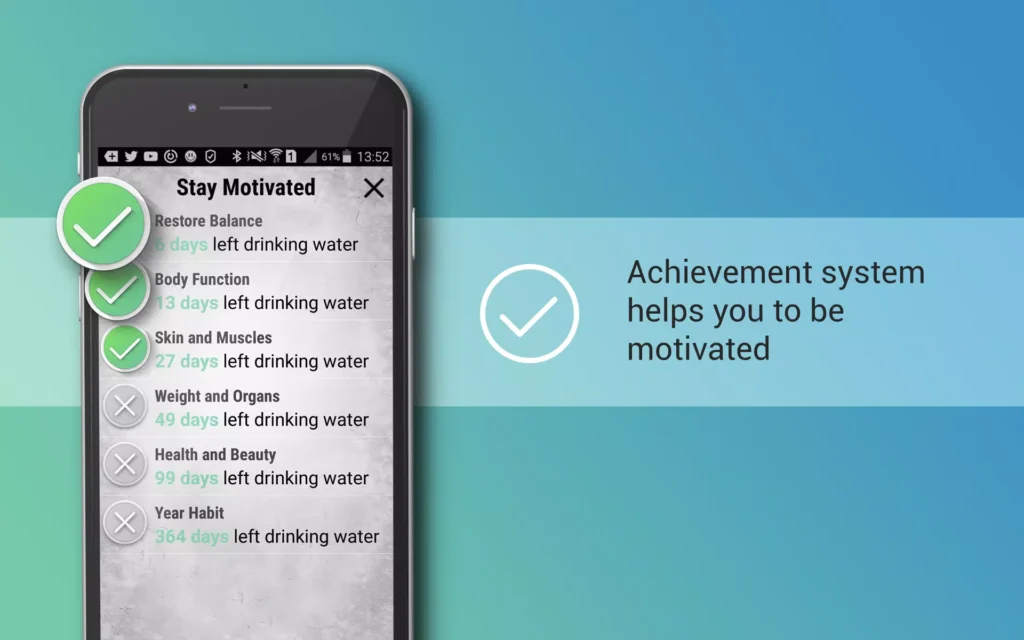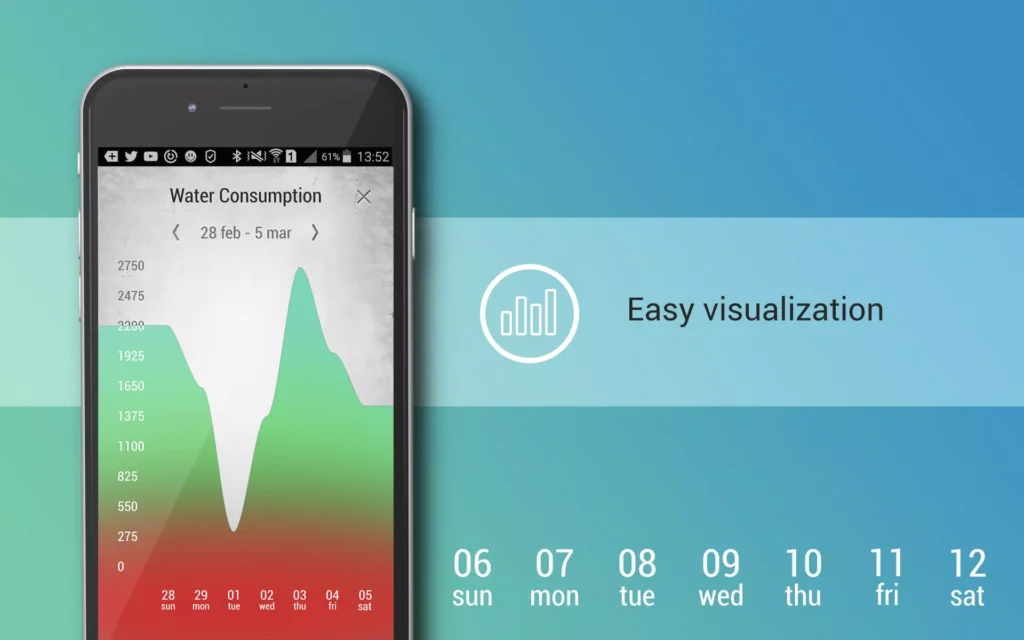Table of contents:
Apps are ruling the tech world with little competition. There’s literally one for every situation; cooking, fitness, religion, even daily chores! If there’s a time for developers to jump on the mobile app development wagon, well, it’s now.
But creating one that perfectly fits into a user’s lifestyle isn’t as simple as believed. It’s why developers spend tons of effort to figure out what separates the hots from the “nots” in a competitive market.
This is what makes discovering apps that beat the odds such a sweet victory. And this case study focuses on one like that; Slim Water. In this post, we’ll find out how this trending app combines important features with a crucial need in today’s fast paced world.
Background
Mobile app development services are cashing in on health apps. And why not, when there’s such a massive demand? With so much going on around us, it’s no shock that keeping healthy has become a tiring task.
Even with the constant warnings from medical experts, many still fail at simple healthy habits, like drinking water. And considering how much of a big deal dehydration can be, such a fact can be quite alarming.
But no one blames you; the hectic routines of everyday life tend to have us all booked. From demanding schedules to tight deadlines and nagging bosses, you’re all but swamped. Then, money problems, relationship struggles, and family duties come into the mix. So, when do you find the time to remind yourself to take a sip?
Project Overview
Every app’s success starts from identifying a nagging problem in the market. Then, it’s tailored to target these issues and provide an appealing solution. This mobile app development company does by providing a modern solution to an ageless issue.
The User’s Challenge
Slim Water was created as a response to these distractions that put you at risk of dehydration problems. Because let’s face it; far serious problems lie ahead should you continue in such a path. From kidney stones to fatigue, health issues, and heat stroke, the health implications are alarming. So, the mobile applications development was plotted to target these challenges;
- Terrible Water-Drinking Habits: We’re usually so preoccupied with our daily busy schedules, we often forget to rehydrate when necessary.
- Unhealthy Lifestyle: Most people would rather drink anything else- and usually what’s bad for them.
- Risk of Dehydration-Triggered Illnesses: Sometimes, we’re not certain if our water balance is enough to protect us from related health issues.
- Weight Problems: Drinking water may be part of our weight loss routines, but our commitment may not be consistent.
Slim Water’s Solution
Once these issues were recognized, Slim Water was designed to solve them. The thoughtful app works with one simple target; remind you to drink water. Though its premise sounds simple, its influence is quite powerful. Its effective features help users track their daily water intake, reducing the possibility of dehydration.
Its mobile application development company focuses on a widespread, yet ignored health problem. It’s why its vast list of target audience includes;
- People who want to keep a healthy lifestyle.
- People watching their weight.
- Those looking to build healthy skin and nails.
- People worried about dehydration and water balance.
- People hoping to dodge dehydration-related health problems, like kidney stones.
Through its interactive features, users can maintain healthy water intake and accomplish overall wellness.
Scope and Deliverables
Slim Water’s mobile app development relied on functionality and user-friendliness. It’s why its core features include;
Customizable Water Demand Calculator: The app uses your set weight and activity level to calculate your daily water requirement. So, every user’s recommendation is crafted to match their personal needs.
Rehydration Reminders: Push notifications give you constant head ups on when to drink water daily. This feature is super handy if you operate a busy schedule or procrastinate a lot.
Consumption Statistics: You can also follow your daily water intake progress on the app. Plus, the colorful charts and graphs make tracking your hydration journey exciting.
Technology and Operation
The team had a powerful vision, but they also needed the ideal structure to make it a successful reality. So, Slim Water’s build needed to prioritize flexibility. It’s why the developers used these frameworks;
Kotlin for Programming
Since Slim Water was built for Android, Kotlin was the ideal choice for its coding. Because it’s smooth with existing code, programming this app with its language was a breeze. Plus, Kotlin is safe and easy to use, so the developers could tweak the app to perfection.
Room for Database
To store user data on this tracking app, Room database was the best choice. Like Kotlin, it’s a great option if you want a simple system that handles data queries with ease. Room also offers a reliable library that’s easy to access.
Retrofit and Coroutines for Networking
Retrofit and Coroutines are known to work great as networking options in Android apps. And together, they allow data fetching from the servers without freezing the app. Because of their smooth operation as a combo, users can get the latest updates and features without lag.
Firebase for Integration
Its diverse toolbox features make Firebase a preferred option for mobile app development services. Firebase Cloud Messaging handles push notification reminders. While account safety is supervised by Firebase Authentication. The developers run updates and testing through Firebase Remote Config. And Firebase Analytics provides user behavior and app performance insights.
MVMM Architecture
Apps like Slim Water often need future upgrades and remodels. So, a flexible architecture fitted this development. It’s why the app was built with the Model-View-ViewModel. This plan makes testing, upgrading, and editing Slim Water easier for the developers..
Development and Post-Deployment Phases
Slim Water is an analytical app, so it’s expected to handle tracking and calculations. So, the mobile application development team needed a process that lets them work at their best pace. It’s why the SCRUM methodology was used, so they can hit set benchmarks in periodic sprints. This technique was a perfect fit, considering the app’s development was planned for three months.
The app’s entire process was handled by the Android developer, who handled other roles as well. Since the SCRUM process is used, the developer can perform multiple roles in short bursts. They can write the code, manage the project’s timeline, and conduct testings at scheduled paces.
Because Slim Water’s architecture allows easy editing, the developer keeps running updates and bug fixes. Tests and additional features can also be added without bothering the app’s usage. User feedback isn’t ignored either, so its appeal remains high. So, Slim Water experiences constant improvement even long after its release.
Conclusion
Slim Water proves in app development, a little can do a lot. The app recognized a major need and responded with an impressive solution. And understanding its target user guided its development’s success.
Its flexible technology lets the app focus on the user above all. Plus, the short development schedule was matched with a solid management plan. Indeed, its case study offers a mobile app development journey worth following.
Got a mobile app project you want us to bring to reality? Let’s work together.




